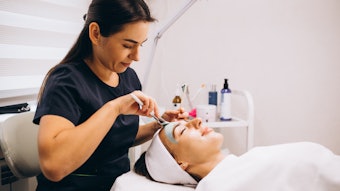
In modern society, the recognition and acceptance of the LGBTQIA community have significantly increased. As a result, businesses and organizations are increasingly striving to create safe and inclusive spaces for everyone, including medical spas. In today’s diverse and inclusive world, it’s essential to ensure that medspas are welcoming and inclusive of all clients, including those who identify as LGBTQIA. I interviewed many individuals within the community to gather their personal quotes, aiming to share their experiences of feeling inclusive. By making your practice LGBTQIA-friendly, you not only attract a diverse clientele but also provide a positive and affirming experience for all individuals. This article will delve into strategies and practices that can be implemented to ensure an LGBTQIA-friendly environment in your medspa.
Foster a Welcoming Atmosphere
To create an inclusive environment, it is essential to foster a welcoming atmosphere within your medspa. Ensure that your physical space is inclusive and safe for everyone. Train and educate your staff on LGBTQIA terminology, issues and sensitivities. Encourage open-mindedness and respect for diversity among your employees, emphasizing the importance of treating all clients equally and without discrimination. Display LGBTQIA inclusive signs, symbols and artwork, such as the pride flag or symbols representing transgender and non-binary identities, in prominent areas of your spa. This will help LGBTQIA clients feel welcomed, valued and recognized.
Dr. Robert Versteeg, D.S.W., shares, “Although some people contend that LGBTQIA people want special treatment, that is actually not the case. It is much more important to be treated just like anyone else: with dignity and respect. This means forms with appropriate language; use of appropriate pronouns, understanding of the LGBT culture and just being respectful of us. Being LGBT is only a small part of our sense of self, and when going to a medical spa, it should not be central to the way that we are approached.”
Update Policies and Forms
Rene Silvin explains, “What creates a barrier to providing a comfortable environment at a medical spa for members of this community is when intake paperwork is not inclusive. If someone who is LGBT cannot answer a question because the “multiple choice” answers do not include an option that represents them, it sets a tone of non-inclusiveness from the service provider.”
Review and update your medspa’s policies and forms to ensure that they are LGBTQIA inclusive and respectful. Revise any gender-specific language, such as using gender-neutral terms like “partner “ or “spouse” instead of “husband” or “wife.” Additionally, provide non-binary, transgender and intersex individuals with options to select their appropriate gender identity or if they prefer not to disclose. Allow clients to specify their preferred name and gender pronouns. Make sure your privacy forms acknowledge diverse relationships and family structures. It is vital that all clients feel respected, regardless of their gender identity or sexual orientation. Include LGBTQIA considerations in your dress code and non-discrimination policies.
Offer LGBTQIA-Specific Services
Consider developing healthcare and wellness services tailored to the specific needs of the LGBTQIA community. Offer LGBTQIA inclusive treatments, such as hormone therapy for transgender individuals or laser hair removal for non-binary clients. Collaborate with LGBTQIA-affirming healthcare professionals or therapists to provide specialized services, consultations and resources within your medspa. Display information and resources related to LGBTQIA health concerns, from sexual health to mental wellness. Annalisa Calisti, M.D., Ph.D., of Rome, Italy, recommends, “It is important not to make members of the LGBTQIA community feel different. They don’t want to be treated as outsiders. Be welcoming and accepting and treat them as you would any client – respectfully. As a practitioner, you may wish to consider adding psychological consultations to help address mental health concerns, as this community deals with a substantial amount of negativity and rejection by the general public.”
Train Staff on LGBTQIA Cultural Competency
Providing comprehensive LGBTQIA cultural competency training to your staff is crucial to ensure they understand and embrace the unique needs and concerns of this community. Engage experts or consultants who specialize in LGBTQIA training to educate your employees on LGBTQIA-specific terminology, pronouns and the appropriate use of language. Provide training on gender identities, sexual orientations and the challenges that LGBTQIA individuals may face. Additionally, teach your staff about LGBTQIA health disparities and specific concerns faced by this community. This training will help your team provide a judgment-free environment and deliver competent care to LGBTQIA clientele. Your staff must understand the importance of and exhibit sensitivity, respect and confidentiality.
According to Brandon Christopher, R.N., B.S.N., “The LGBTQIA Community, in particular, has wants and needs that are different from other communities. Remaining knowledgeable, perceptive and familiar with this ever-changing landscape will keep your practice ahead of the game and a trusted practitioner within the community.”
Effectively training staff is critical for creating and maintaining a successful and LGBTQIA-inclusive practice. Here are ten recommendations for training:
First, Awareness and Sensitivity Training. This begins with general awareness training to teach your staff the terminology and concepts related to LGBTQIA identities. To increase staff sensitivity and build empathy, discuss the challenges and discrimination these individuals face in modern society.
Second, Consider Cultural Competency Workshops that explore topics such as gender identity, sexual orientation and how these may cross cultural lines. Promote in-depth discussions and open dialogue in an environment that allows staff to ask questions and learn.
Third, Engage in Role-Playing Scenarios. This allows staff members to practice appropriate responses to LGBTQIA clients. It is important for your staff to develop practical communication and problem-solving skills appropriate to dealing with this community.
Fourth, Teach Inclusive Language and Communication Skills. This includes using the correct gender pronouns and avoiding making assumptions about a client’s gender identity. Encourage the use of active listening skills and demonstrating respect for client privacy.
Fifth, Review Your Policies. Having specific LGBTQIA policies in place is essential. Be sure your staff thoroughly understand and adhere to them. Provide training and an opportunity for staff members to seek clarification on these policies.
Sixth, Educate, Educate, Educate. Promote on-going education and training in the LGBTQIA area. It is important that your staff stays abreast of the latest issues and advancements in treatments and services relevant to this group of clients. Provide periodic refresher sessions to keep awareness and training fresh. Use these to review and update policies as needed.
Seventh, Provide Feedback Mechanisms. It is critical that staff have a means of reporting any concerns related to LGBTQIA inclusivity. Review their feedback on a regular basis and make improvements.
Eighth, Lead by Example. If management doesn’t set a positive example in demonstrating respect and inclusivity, your practice will face obstacles. Management must practice what it preaches.
Ninth, Set up a Diversity Team. If you have a large practice, establish a diversity committee to monitor training and LGBTQIA inclusivity. If your practice is smaller, perhaps have an LGTBQIA point person among your staff to handle any upcoming issues.
Ten, Community Involvement. Encourage staff to participate in LGBTQIA events to increase their understanding and support for this community. Sponsor LGBTQIA events that promote awareness and inclusion.
Implement Anti-Discrimination Policies
Create and enforce clear anti-discrimination policies within your medspa. Ensure your policies explicitly state that discrimination based on sexual orientation and gender identity will not be tolerated. Display these policies in visible areas within your medspa, including your website and entrance. Empower your staff to report any instances of discrimination or mistreatment, and establish procedures for addressing and resolving such incidents promptly and transparently.
Using Inclusive Language
If your medspa is to be LGBTQIA-friendly, it must use inclusive language. Your brand should expand onto social media and have info on all your brochures and your website. For example, your staff must relearn how to use pronouns. Instead of greeting a client upon entering as Ms.or Sir, which could be taken as offensive, they should simply say “Hello.” It is important to use gender-neutral language and to ask clients about their preferred pronouns.
Staff needs to understand the terminology used by this community; for example, transgender, cisgender, queer, non-binary, etc. Using appropriate terminology also extends to relationships and family; for example, using partner or spouse rather than husband/wife. Again, it is best to ask the client about preferred terminology. Asking a client how they wish to be addressed shows respect and helps put them at ease.
Respect is paramount. Unless necessary and relevant for the treatment, don’t ask personal questions regarding gender identity or sexual orientation. Keep all information private and confidential. This is especially important when it comes to information shared by the client. The community at large may not be aware of this person’s LGBTQIA status.
Finally, mistakes will happen, especially when it comes to using incorrect language or pronouns. Apologize to the client and correct the mistake.
Network With LGBTQIA Organizations
Engaging with local LGBTQIA organizations and community groups is an excellent way to demonstrate your commitment to creating a welcoming space. Attend pride events, donate to LGBTQIA causes and sponsor community initiatives. Collaborating with LGBTQIA organizations will help you build relationships, gain insights and showcase your medspa as an LGBTQIA-friendly establishment.
Conclusion
Building an LGBTQIA-inclusive environment in your medspa is a continuous process that requires ongoing effort and commitment. By fostering a welcoming atmosphere, updating policies, offering LGBTQIA-specific services, providing staff training, implementing anti-discrimination policies and networking with LGBTQIA organizations, you can create a medspa that celebrates diversity and supports the unique needs of the LGBTQIA community. By doing so, you not only attract and retain diverse clientele but also contribute to a more inclusive and accepting society as a whole.
Dr. Calisti sums it up very well: “ L’amore è una bellezza multicolore,” meaning, “Love is a free, multicolored beauty.”












